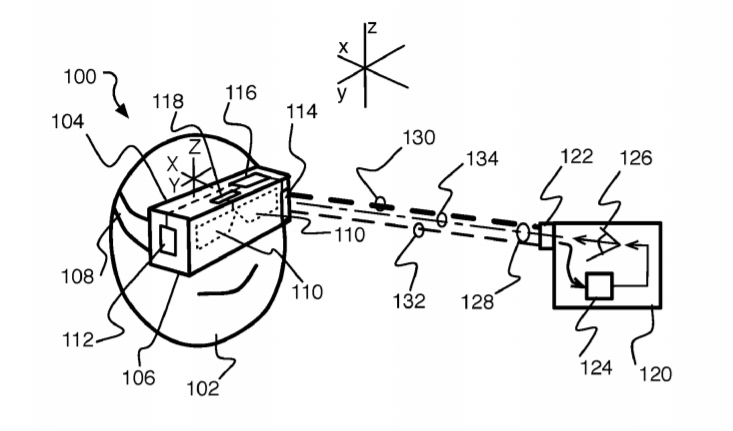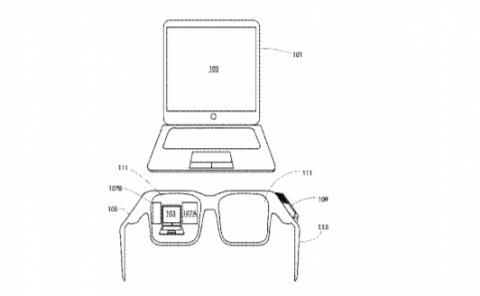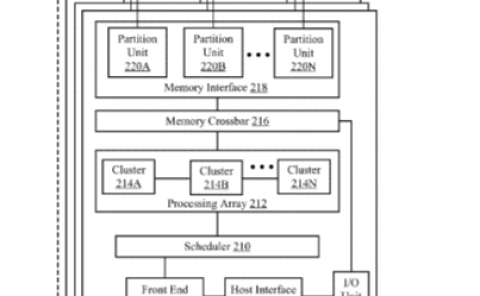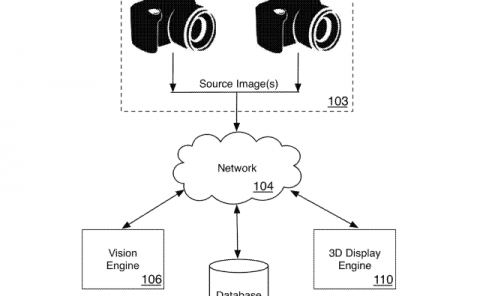Intel Patent | Method and System of Wireless Data Transmission for Virtual or Augmented Reality Head Mounted Displays
Publication Number: 20190027113
Publication Date: 2019-01-24
Applicants: Intel

Abstract
A system, article, and method of wireless data transmission for virtual or augmented reality head mounted displays.
Background
Head mounted displays (HMDs) are worn over the eyes and present images to a user wearing the HMD to provide the user a point of view (POV) in a virtual or augmented reality (or world). The HMD is conventionally connected by one or more wires to an image processing base, such as a game console, computer, or dock. In order to provide real-time images on the HMD, sensors on the HMD transmit data indicating the 3D location and orientation of the HMD to the image processing device or base, and the base then transmits the image to the HMD over the wires. Due to the constant motion of the HMD, the location and orientation of the HMD must be updated constantly with new images so that the images displayed on the HMD match the motion of the HMD in near real-time so that the user feels as if they are in the virtual or augmented world. This requires a very large amount of computations usually limiting the HMD-to-base connection as a wired connection. Such a wired connection can be very restrictive by limiting the range of motion of a user wearing the HMD, and can be cumbersome when the need arises to frequently move the wire out of the way as the user moves.
Short range or personal area networks such as those based on Wireless Gigabit Alliance (WiGig) certification program standards have been tried. A WiGig system uses beamforming to direct the data transmission to the HMD. The WiGig system uses a radio-based search by signal strength to direct the beam in the correct direction toward the HMD. Such a system, however, often is too slow and cannot perform the search with sufficient speed and frequency to provide smooth video with highly accurate, near real-time perspectives to the HMD, especially when the user is in constant motion. This can result in a significant reduction in video quality where the perspective of the images do not match the real-time position of the HMD or even complete signal loss resulting in a blank or static image and therefore, the system may become unusable.



